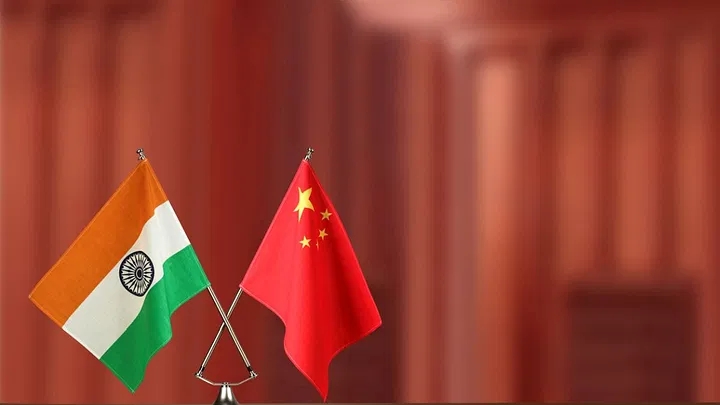
China (1960-2020): A Saga of Betrayal
 Representative image of China and India relations
Representative image of China and India relations
India today stands bewildered, like a young teenager in front of a heap of hundreds of pieces of a jigsaw puzzle, not knowing where to fit them in to create the charming castle pictured on the box.
Patience, perseverance and imagination are required to complete the picture and it is not clear even where to begin. What we have are a few disjointed pieces of information like sighting of Chinese military movements in the Ladakh region in the vicinity of the Line of Actual Control (LAC), India’s immediate response that the matter would be resolved through dialogue at the military and diplomatic levels, reports of meetings and an announcement of disengagement by both sides.
Then there was a sudden clash in which there were 20 confirmed deaths on the Indian side and unconfirmed and uncounted deaths, including that of the Commander on the Chinese side and reports of withdrawal.
The whole episode, however blurred, brought back memories of nearly sixty years of Chinese betrayal, aggression, deception and blackmail against India.
The Chinese behaviour revolved around the border between the two countries, which has remained un-delineated and un-demarcated because of China’s stubborn rejection of the historical border.
The Chinese aggression of 1962 took place at a time when the two sides were discussing the realignment of a border on the basis of historic treaties and evidence. The war resulted in China occupying the Aksai Chin area in the west and the Chinese claim over the whole of Arunachal Pradesh in the east.
India remained steadfast in its demand for the occupied areas to be vacated, even while working bilaterally and multilaterally to find areas for cooperation as neighbouring developing countries.
India-China relations over the last 58 years were marked by efforts at settlement of the border, normalisation of relations, signing of various agreements to develop economic relations, occasional clashes on the border, summit level meetings and clashes in international bodies on account of China’s solidarity with Pakistan.
China grew rapidly after it established relations with the United States and became Asia’s largest and the world’s second largest economy. China also became India’s largest trading partner, next only to the United States.
China’s exports to India far exceeded its imports from India, leaving a huge deficit in trade. The leaders of the two countries met at different places and kept a semblance of dialogue and understanding. But the border dispute remained acute and no formula emerged to solve it.
The conflict goes back to at least 1914, when representatives from Britain, the Republic of China and Tibet gathered in Shimla to negotiate a treaty that would determine the status of Tibet and effectively settle the borders between China and British India.
The Chinese did not like the proposed terms that would have allowed Tibet to be autonomous and remain under Chinese control and refused to sign the deal. But Britain and Tibet signed a treaty establishing what would be called the McMahon Line, named after a British colonial official, Henry McMahon, who proposed the border.
India maintains that the McMahon Line, a 550-mile frontier that extends through the Himalayas, is the official legal border between China and India.
But China has never accepted it on the ground that it was a colonial legacy.
When India became independent and China became the People’s Republic within two years of each other, they found themselves at odds over the border. Tensions rose throughout the 1950s.
The Chinese insisted that Tibet was never independent and could not have signed a treaty creating an international border. There were several failed attempts at peaceful negotiations. China sought to control critical roadways near its western frontier in Xinjiang. China took control of Tibet and the ruler, the Dalai Lama, sought asylum in India, which provoked China.
In 1962, Chinese troops crossed the McMahon Line and took up positions deep in Indian territory, capturing mountain passes and towns. The war lasted one month and resulted in more than 1000 Indian deaths and over 3000 Indians taken prisoners. The Chinese military suffered fewer than 800 deaths.
By November, Premier Zhou Enlai of China declared a cease-fire, unofficially redrawing the border near where Chinese troops had conquered territory and the so-called Line of Actual Control (LAC) was established and the two countries confronted each other across an ill-defined border that ran through the bleak and inaccessible Himalayan peaks.
Tensions came to a head again in 1967 along two mountain passes, Nathu La and Cho La, that connected Sikkim — then a kingdom and a protectorate of India — and China’s Tibet Autonomous Region. A scuffle broke out when Indian troops began laying barbed wire along what they recognised as the border. The scuffles soon escalated when a Chinese military unit began firing artillery shells at the Indian troops. In the ensuing conflict, more than 150 Indian soldiers and 340 Chinese were killed.
The clashes in September and October 1967 in those passes was later considered the second all-out war between China and India. India prevailed, destroying Chinese fortifications in Nathu La and pushing them farther back into their territory near Cho La. The change in positions, however, meant that China and India each had different and conflicting ideas about the location of the Line of Actual Control. In 1987, an Indian military exercise on the border provoked clashes on the LAC.
The term "LAC" gained legal recognition in the Sino-Indian agreements signed in 1993 and 1996. The 1996 agreement states, "No activities of either side shall overstep the line of actual control."
However, clause number 6 of the 1993 Agreement on the Maintenance of Peace and Tranquillity along the Line of Actual Control in the India-China Border Areas mentions, "The two sides agree that references to the line of actual control in this Agreement do not prejudice their respective positions on the boundary question".
The Chinese troops continued to illegally enter the area several times every year to nibble Indian land to fortify their positions, while the boundary discussions dragged on. In 2013, there was a three-week standoff between Indian and Chinese troops 30 km southeast of Daulat Beg Oldi.
It was resolved and both Chinese and Indian troops withdrew in exchange for a Chinese agreement to destroy some military structures over 250 km to the south near Chumar that India perceived as threatening.
In October 2013, India and China signed a border defence cooperation agreement to ensure that patrolling along the LAC does not escalate into armed conflict.
In June 2017, the Chinese began building a road in the Doklam Plateau, an area of the Himalayas controlled by Bhutan. The plateau lies on the border of Bhutan and China, but India sees it as a buffer zone that is close to other disputed areas with China.
Indian troops carrying weapons and operating bulldozers confronted the Chinese with the intention of destroying the road. A standoff ensued, soldiers threw rocks at each other, and troops from both sides suffered injuries.
In August, the countries agreed to withdraw from the area, and China stopped construction of the road. But it is suspected that the Chinese are stationed in the area, waiting for an opportunity to construct the road again.
The sudden and unexpected confrontation in the Galwan area in June 2020 at the time of a pandemic has raised suspicion that the Chinese action went beyond the border question. China, while on the defensive against the charge that the Coronavirus was created by it, has become assertive in different parts of the world.
China flexed its muscles, not only against India, but also Hong Kong, Taiwan and in the South China Sea. China has ambitions to step into the perceived vacuum created by the health and economic disaster in the United States and it may have decided to “teach a lesson” to India again as a rival in Asia.
China has deliberately moved away from the “Wuhan Spirit” and the “Chennai Understanding” to ensure that India does not gain any advantages in the forthcoming changes in the global order in the post COVID-19 era.
This quick recap of history over 60 years establishes that the only answer to the India-China border dispute is an intensification of the dialogue on the border to delineate and demarcate the border in a time bound manner.
The present situation of a notional LAC leaves the possibility open for minor and major clashes. The Indian army has orders to retaliate and the present convention of not using fire arms could be violated any time. We shall have to live with “a no-war no-peace situation” for a long time to come.
The meeting of the Commanders from both sides on June 23 seems to have succeeded in finalising the modalities of withdrawal by the two sides, though details are not available.
If the status quo is being restored, it is only relief and not a solution and the shadow of the death of our soldiers will remain on India-China relations.
